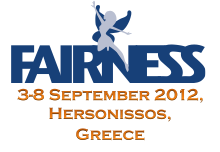Sprecher
Herr
Lucas Burigo
(Frankfurt Institute for Advanced Studies, J.-W. Goethe-University, 60438 Frankfurt am Main, Germany)
Beschreibung
The BIOMAT facility at FAIR will allow measurements of the physical and biological effects for heavy ion beams with energies up to 10A GeV [1]. The evaluation of space radiation effects through the irradiation with particles and energies similar to those found at cosmic rays is possible. Such experiments are becoming ever more important with the increase of the duration of space missions. The biological effects due to a long time exposition to cosmic rays are not yet well known. Microdosimetry is a well-established experimental technique for measuring the dose deposition in the passage of fast particles through matter [2]. A tissue-equivalent proportional counter (TEPC) is usually applied to estimate the dose deposition in simulated volumes of micrometer dimensions when the detector is placed in a homogeneous radiation field. This condition is met by a detector embedded in the cosmic radiation. However, the topology of the accelerator-based radiation field can differ strongly from the homogeneous radiation situation. This can lead to wrong evaluation of microdosimetric quantities. With a Monte Carlo model [3] based on the Geant4 toolkit [4] we simulate the TEPC measurements for high energy iron beams. We investigate the influence of the beam topology to the microdosimetric measurements. The effects of several beam profiles are simulated. Changes in the probability distribution for the number of tracks and total track length inside the TEPC are presented. Modifications to the standard calculation procedure in microdosimetry are discussed.
References
[1] FAIR - Baseline Technical Report, Volume 5, Experiment Proposals on Atomic, Plasma and Applied Physics (APPA). English, March 2006, 584 pages. Retrieved from http://www.fair-center.eu/fileadmin/fair/publications_FAIR/FAIR_BTR_5.pdf
[2] International Commission of Radiation Units and Measurements (ICRU) 1983 Microdosimetry Report No 36 (Bethesda, MD).
[3] I. Pshenichnov et al., Nucl. Inst. Meth. Phys. Research B 266 (2008) 1094;
268 (2010) 604
[4] J. Allison et al., IEEE Transact. Nucl. Sci. 53 (2006) 270
Autor
Herr
Lucas Burigo
(Frankfurt Institute for Advanced Studies, J.-W. Goethe-University, 60438 Frankfurt am Main, Germany)
Co-Autoren
Prof.
Igor Mishustin
(Frankfurt Institute for Advanced Studies, J.-W. Goethe-University, 60438 Frankfurt am Main, Germany; Kurchatov Institute, Russian Research Center, 123182 Moscow, Russia)
Dr.
Igor Pshenichnov
(Frankfurt Institute for Advanced Studies, J.-W. Goethe-University, 60438 Frankfurt am Main, Germany; Institute for Nuclear Research, Russian Academy of Science, 117312 Moscow, Russia)
Prof.
Marcus Bleicher
(Frankfurt Institute for Advanced Studies, J.-W. Goethe-University, 60438 Frankfurt am Main, Germany)

